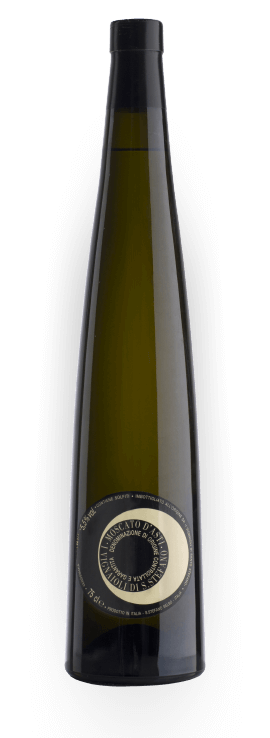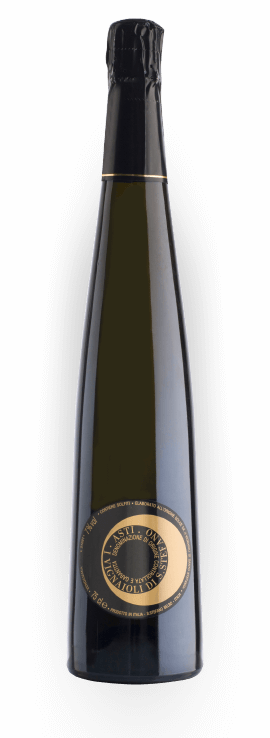
It's 1976 in Santo Stefano Belbo, a small town in the Langhe that faces the Asti zone, famous for its moscato grape and the success of the writer Cesare Pavese. Here, a group of wine growers increasingly feels the need for a radical change that re-instils quality in the production of Moscato wine, which has become too commercial. At the same time, two brothers who are writing a new chapter in the Langhe of Barolo and Barbaresco, targeting quality precisely, wish to return to their native land in the Valdivilla hamlet of Santo Stefano Belbo, where their family has its roots.
This meeting of fellowship and shared goals leads to the creation of the “Vignaioli di Santo Stefano Belbo” (the “Santo Stefano Belbo Winemakers”). The 4 winemakers are Giancarlo Scavino, Sergio Santi, Mario Monti, and Piero Gatti who contribute their land, planted with Moscato, while Bruno and Marcello Ceretto contribute their business skills.
All of them are animated by an ambitious project aiming for quality and offering a wine that reflects the region and is pleasant to drink.
As time passes, the business purchases and selects other land in the Canelli and Calosso zones. Currently, we have a surface area of approximately 37 hectares divided between Santo Stefano (approximately 20 hectares), Calosso (approximately 11 hectares), and Canelli (approximately 6 hectares).
Over time, some partners abandon the business and only the Ceretto and Scavino families remain. Giancarlo died in 1995, but his two sons Gianpiero and Andrea continue his commitment and keep his values alive.
The union of those two families was perfect, the wine quickly won the approval of the most expert palates and a new idea was born to give it a unique form.
At that time, the Ceretto family had already redesigned their labels and created the innovative graphic of the “slashed” label for the Arneis Blangè. In 1989, Giacomo Bersanetti, one of the most talented Italian designers, was invited to think up a new label and shape of the bottle. Cesare Pavese and his most famous book, The Moon and the Bonfires, were the inspiration. This gave rise to a Moon that forms the label and the Bonfire in the shape of the bottle.
With the third generation of the Cerettos and the second of the Scavinos, these families continue to produce Moscato with the same original idea: top quality, always keeping an eye on the latest innovations.
Since 2017, our production has been certified organic, using lower yields and careful selection in the vineyard. In addition, with the 2023 harvest, we’ve introduced an innovation linked to reflections we’ve made for a few years now. We lightened our bottle packaging to reduce its environmental impact. The packages have been reduced but, above all, the bottles were redesigned as to weight, decreasing from the current 750 g to 650 g per whole bottle and from 500 g to 350 g per half bottle. And to keep up with the times, the ordinary cork closure that, in 1976, had been the Vignaioli’s great innovation with Moscato bottles, was abandoned. Instead, we’ve adopted screw caps, which are more functional and easier to use during service.


Contacts
I Vignaioli di Santo Stefano s.s.a.
Località Marini 26
12058 Santo Stefano Belbo CN